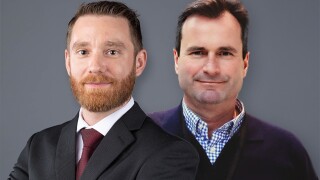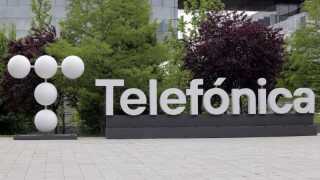
In the game of rugby, there is a saying from the indomitable All Blacks that goes: “The first stage of learning is silence; the second stage is listening.”
The philosophy of listening to his customers and going where their needs are, is one that Brendan Ives, chief executive of TeliaSonera International Carrier (TSIC), a New Zealander – and a passionate All Blacks fan – has set in motion since leading the carrier in January 2014.
The philosophy is paying off. In November, Ives collected the Best Global Wholesale Carrier for data at the 2015 Global Carrier Awards, while his beloved All Blacks won the Rugby World Cup final in late October. “The award is confirmation that we are focussing on the right things – primarily customer centricity and innovation,” says Ives.
A big driver for TSIC in 2015 has been its IPX offering. It first launched its IPX service in May 2013, which is based on its wholly-owned and fully redundant, 100G-enabled optical network.
In April 2015, Turkcell started offering its customers LTE roaming – in 32 countries – with TSIC’s IPX diameter signalling service. “For us, a big push has been on IPX. The focus on that has been around LTE roaming,” he says, noting that the technology is in its early days as operators are still honing their LTE strategies amid the busy landscape of IPX services. “I’ll question anyone who claims that they’ve got a ton of traffic driving their top-line.”
At the same time, TSIC has set about expanding its global IP backbone network, particularly in North America. “We are focussing more on density by adding data centres within the metros in the US,” says Ives.
Houston, Texas is a good example of where TSIC is applying fresh focus to metro networks. Customers can now access a set of connectivity services at its 1301 Fannin Street in May 2015, after the carrier launched several PoPs throughout metropolitan and suburban Dallas last year. About 40% of TSIC’s 61,500km of fibre runs through North America and its growing presence in Dallas and Houston,– strengthened through partnerships with Netrality Properties and Unite Private Networks – provides a major gateway to Latin America, including Mexico.
“We see a huge growth in Texas that will enable us to reach the key demarcation points for Mexico,” says Ives. “We are experiencing really good growth in Latin America. Mexico is a big market for us and we want to get closer to the traffic.”
Also in May this year, TSIC announced that it had added 100 service provider customers in 18 months and increased its reach to 62 major North American data centres. The US market has proven to be one of its highest performing markets, notes Ives. “Our top-line growth has been in excess of 25% for five years in a row now. That has been a really big growth engine,” he says.
The additional PoPs will further extend TSIC’s 100G fibre-based connectivity services into more North American markets. The carrier was said to be the first to launch its 100G-enabled network from Europe to North America.
“We started the year a bit slow but we’ve had a huge intake of 100G transport in Q3 [2015]. We expect to see that continuing into Q4 in both Europe and the US,” says Ives. “It’s developing in line with our expectations.”
Creativity in managing services
At a panel discussion at Capacity Europe, Ives urged carriers to move beyond traditional services and find ways to be creative in how they provide and manage services.
“Different customers require different services. We need to make sure we are not narrow minded and just pushing traditional services like IP transit. We need to be creative with managing and running services, which is where our strengths lie,” Ives said at the panel.
So how does TSIC stay creative? “We’ve been asking ourselves, ‘What are the components of what we do for ourselves that could be interesting to a company?’” says Ives.
“For example, a big content service provider may want to own fibre and choose an application or service on top of it, but would it really want to build up a network operations centre and an engineering team to manage that network? That’s where TSIC steps in.”
TSIC has been largely “inward focussed” in the last year, says Ives. “A lot of work has been around retooling our processes and systems. When we talk about customer centricity, it drives everything we do.”
As a result, TSIC has sought to repackage, retool and utilise different components for different customer needs while at the same time, staying true to its core strengths.
“We have been operating a big backbone and that’s what we are really good at,” says Ives. “We are not a digging expert but once there is fibre in the ground, we are really good at optimising the running of the network, deploying the kit to light up the network, managing the performance of the network.”
At the same time, because of the relatively thin margins in the competitive wholesale market, TSIC has to be careful not to drive down costs by being overly flexible with its offerings.
Ives observes that customers are purchasing a lot of fibre, which has led to TSIC providing services on top of their network.
“There’s a handful of that happening today and that trend will continue. We are in discussions with several clients right now,” says Ives.
What is Ives’ plan for driving profit in the coming year? “Continue to be a really good supplier for our customers,” he says without missing a beat. “Our growth is on building market share in the markets where we are not mainly the leader already today.”
Pride in second place
In Europe, the abolition of roaming charges in all 28 countries of the EU by next year will drive significant traffic too, he predicts. “We need to make sure that we are one of the first companies customers are thinking about when they start looking to solve their mobile roaming needs, for example,” he says.
TeliaSonera never had a strategy to be the biggest, Ives maintains. “Our aim was never to be the number one in IP transit. If you look at the US market, we knew we were never going to be as big as some of the gigantic companies out there. But if we can secure at least being the alternative, then we’re well placed to be the front runner,” he explains.
Ives is likely to have the merger of its rivals Level 3 Communications’ and Global Crossing in mind. The two combined forces in 2011 in a move that has since strengthened their network footprint and balance sheet.
“We need to establish ourselves as a strong number two player. I believe we’ve done that by focussing on being the premium provider,” assesses Ives.
Pointing to its rivals, Ives says he does not see any competitor as niche as it is. “If you look at the likes of Level 3 – these are great companies but they also have a big enterprise focus. The only thing we do is wholesale and connectivity. I like the fact that if something goes wrong, our clients know that they can ring me and the only thing I – and my employees – think about is wholesale,” he says.
Taking the Nordic approach to the global market
The ongoing differentiator for TSIC – or ‘mana’ as New Zealanders call it – will be the strengthening of its customer-centric approach across the company and “the human factor”. Rickard Backlin, TSIC’s vice president of brand and marketing, who was also present at the interview concurs. “We have a Nordic heritage. We are good to do business with. We’re open and transparent and really want to help. It’s our way of doing business. If I may simplify – sometimes we’re a bit stupid. We give away things for free but in the long run, it will always pay back. This industry is about old friends and trust. It’s not about the quickest deal. It’s about long-term relationship,” explains Backlin.
It’s one of the reasons why he believes Swedish or Nordic global corporations – though small – have been so successful in the global business.
“And then you employ a CEO from an even smaller country,” Ives chimes in. As a testament to its customer centricity, the carrier claims that its churn figures are almost negligible. “I can count on my hand the customers who have left,” he says, adding that the customers who left have mainly been cost-focussed.
TSIC’s leanness – a team of approximately 450 people globally – is an advantage and where needed, Ives says he can step in and make decisions quickly. 2016 will see the carrier continue to inject new processes and systems to reduce delivery lead times for its customers, including making it easier for them to provision services. That means removing the unnecessary tasks such as having to fill up pages of contracts each time a customer orders new capacity and making it quicker to turn up bandwidth when they want it.
“We are small enough to be fast. We will always be focussed on customer centricity. We are in a heavily commoditised business. We have to differentiate and the only way we can do that is by having an exceptional customer experience,” concludes Ives.




